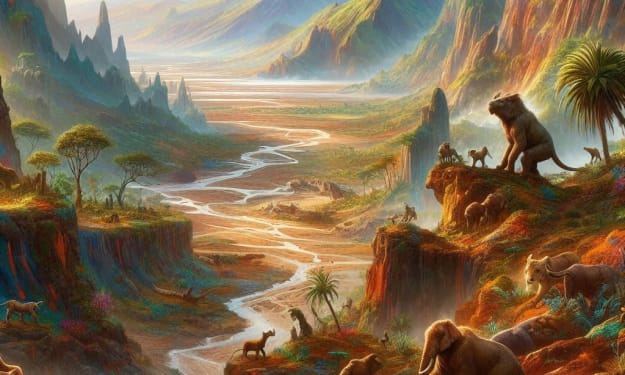Unveiling the Dark Side of the Gilded Age: 10
The Gilded Age

The Gilded Age: An Overview
The Gilded Age in the United States lasted from the 1870s to the early 1900s.
It was a period marked by rapid economic growth, industrial expansion, and technological advancements.
The era was also characterized by stark wealth inequality, with the rich getting richer while many working-class individuals struggled to make ends meet.
Political corruption was rampant during this time, with powerful individuals and corporations exerting significant influence over government policies.
The Gilded Age saw the rise of powerful industrialists like John D. Rockefeller and Andrew Carnegie, who amassed immense fortunes through monopolistic practices.
Labor conditions were harsh, leading to the rise of labor unions and strikes as workers fought for better wages, hours, and working conditions.
Advances in transportation and communication technology revolutionized American society but also brought about significant social and environmental impacts.
The Gilded Age was a time of great contrasts, with unprecedented wealth coexisting alongside widespread poverty and social unrest.
Despite its dark realities, the era laid the foundation for modern America and shaped the nation's economic, political, and social landscape for generations to come.
Industrialization and Its Impact on Society
Industrialization during the Gilded Age led to rapid urbanization and the growth of cities.
The rise of big businesses and monopolies resulted in wealth inequality and exploitation of workers.
Labor strikes and violent clashes between workers and employers became more common.
Child labor and poor working conditions were prevalent in factories and mines.
The influx of immigrants seeking job opportunities further fueled the growth of industrialization.
The environment suffered from pollution and the depletion of natural resources.
Social reform movements emerged to address issues such as labor rights and public health.
The rapid changes brought by industrialization challenged traditional social structures and norms.
Industrialization paved the way for advancements in technology and infrastructure, shaping the modern society we know today.
Working Conditions and Labor Struggles
Workers during the Gilded Age faced abysmal working conditions, including long hours, low wages, and dangerous environments.
Industrialization led to the rise of factories where workers, including women and children, toiled in harsh conditions for meager pay.
Labor unions emerged in response to these injustices, advocating for better wages, hours, and safer working conditions.
Strikes and labor protests were common as workers fought for their rights against powerful corporations and government opposition.
The Haymarket Affair of 1886 highlighted the violent clashes between laborers and authorities, resulting in casualties and arrests.
Social Inequality and Class Divide
The Gilded Age saw a stark contrast between the luxurious lifestyles of the wealthy elite and the harsh living conditions of the working class.
As industrialization boomed, the gap between the rich and the poor widened, leading to increased social inequality.
The wealthy flaunted their opulence through extravagant mansions, lavish parties, and lavish spending, while the working class struggled to make ends meet.
Access to education, healthcare, and basic necessities was limited for the lower classes, perpetuating the class divide.
Social mobility was challenging, with opportunities for advancement mainly available to the privileged few.
Immigration and Urbanization Challenges
Immigrants faced harsh living conditions in overcrowded urban areas.
Rapid urbanization led to poor sanitation and public health issues.
Many immigrants lived in tenements with inadequate facilities.
Urbanization resulted in increased crime rates and social tensions.
The influx of immigrants and rapid urbanization during the Gilded Age presented significant challenges that impacted the quality of life for many individuals living in cities.
Political Corruption and Reforms
The Gilded Age was marked by widespread political corruption, with bribery, cronyism, and patronage prevailing in government.
Wealthy industrialists often manipulated politicians to serve their interests, leading to significant inequalities in society.
Reform movements such as the Civil Service Commission and the Populist Party emerged to combat corruption and advocate for political reforms.
The Pendleton Civil Service Reform Act of 1883 aimed to establish a merit-based system for government employment, reducing the influence of political patronage.
Despite efforts to combat corruption, many challenges remained in reforming the political landscape during the Gilded Age.
Technological Advancements and Cultural Shifts
The Gilded Age witnessed remarkable technological advancements that revolutionized industries such as steel, oil, and railroads.
Innovations like the Bessemer process for steel production and the introduction of the telegraph and telephone dramatically changed communication and transportation.
These technological changes drove economic growth but also widened the gap between the wealthy elite and the working class.
The era also marked significant cultural shifts, as urbanization and industrialization led to the rise of consumer culture and mass media.
The proliferation of newspapers and magazines fueled public interest in politics, entertainment, and social issues, shaping the cultural landscape.
Women's Rights and Gender Inequities
Women faced limited access to education and job opportunities, reinforcing their traditional roles as homemakers.
Gender pay gaps were prevalent, with women earning significantly less than men for the same work.
Women lacked legal rights, including the right to vote and the ability to own property.
The Gilded Age saw the rise of the Women's Suffrage movement, advocating for women's right to vote.
Gender inequities persisted in society, with women often facing discrimination in various aspects of life.
Despite these challenges, women during the Gilded Age demonstrated resilience and fought for their rights.
The Gilded Age in Literature and Art
During the Gilded Age, literature and art often portrayed the stark contrasts between wealth and poverty, highlighting the superficiality and corruption prevalent in society.
Authors like Mark Twain and Edith Wharton used their works to scrutinize the moral decay and social injustices of the era, offering critical commentary on the excesses of the wealthy elite.
Realist painters such as John Singer Sargent captured the opulence of the period but also depicted the struggles of the working class, shedding light on the disparities within society.
The literature and art of the Gilded Age serve as a reflection of the period's complexities, offering valuable insights into the darker realities masked by the era's facade of prosperity.
Legacy of the Gilded Age
The legacy of the Gilded Age includes widening economic inequality and the emergence of a new wealthy elite.
The period laid the foundation for significant advancements in industrialization, technology, and infrastructure that shaped the modern United States.
Social issues such as labor exploitation, child labor, and unsafe working conditions persisted, leading to the growth of labor movements and reforms.
The Gilded Age saw the rise of powerful business magnates who amassed immense wealth and power, often at the expense of the working class.
The era left a lasting impact on American society, economy, and politics, influencing policies and attitudes towards wealth distribution and corporate power.
About the Creator
zakaria ennajem
hello, my name is zakaria and I'm a writer
Enjoyed the story? Support the Creator.
Subscribe for free to receive all their stories in your feed. You could also pledge your support or give them a one-off tip, letting them know you appreciate their work.






Comments
There are no comments for this story
Be the first to respond and start the conversation.